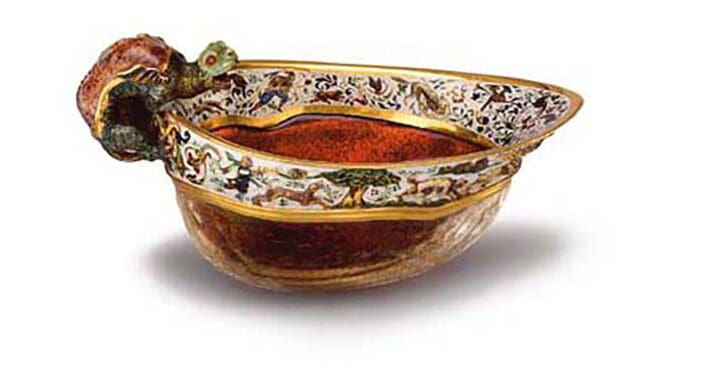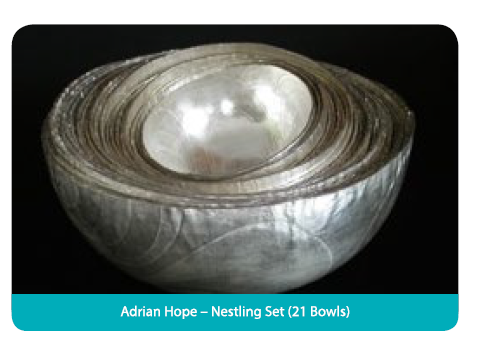Mary Waterfall, Jewellery Specialist
David Morris is affectionately known as ‘The London Jeweller’. The prestigious shop in Bond Street continues to attract royalty and high end clientele with the spectacular creations that are intricately created there. Each piece is handcrafted to the highest standard in the workshop above the store. Although it is one of the last remaining jewellery workshops in Bond Street, it’s reputation continues to shine, putting British jewellery design firmly on the map of world class jewellers.
David Morris started his career as an apprentice in Hatton Garden at the age of 15. His love and natural creative flare for jewellery design led to the opening of his first shop in Hatton Garden in 1962. After winning The De Beers Diamond Awards two years in a row he started attracting real international acclaim. As the reputation and success of the David Morris brand grew, the company relocated to Mayfair in 1969 and then to it’s current home in Bond Street in 1996.
In amongst the glamour and the grandeur, the David Morris brand prides itself on being very much a family jewellers. In 2003 Jeremy Morris took over the helm of the company from his father as managing director and principal designer.
The company proudly states on their website: “A marriage of beauty and technology, in its approach to design and craftsmanship David Morris is as wonderfully unique as its collection of rare gemstones. Whether it is a piece from our beautiful fine jewellery collections or a bespoke creation, David Morris jewellery transcends generations, each design expressing ingenuity, creativity and unparalleled quality.”
Some of the unique creations include The Miss World Crown. It was originally commissioned by Eric Morely, the founder of the Miss World Competition in 1969. He was inspired by the breath-taking sapphire and diamond tiara Morris had created in 1967 for the Countess Marie Kinsky of Austria on her wedding day, in her marriage to Crown Prince Hans Adam of Lichenstein. The stunning turquoise and diamond crown is still used in the competition today.

In 2012 the silver dragon on the bonnet of the vintage Aston Martin the Duke of Cambridge drove down the Mall on his wedding day was made by David Morris. Originally commissioned by the Queen for Prince Charles’s 21st birthday.

I recently had the privilege of valuing some David Morris pieces. Including these beautiful hoops from the Rose Collection. These exquisite rose cut diamond hoops are composed of four graduated rose cut diamonds, each within a brilliant cut diamond surround, with further scintillating micro set diamond detail to the inside of the hoop and clip. The total carat weight is approximately 3.40cts. These were originally purchased in 2008 for £12,500. The current retail price for these earrings is now £38,700. This example not only illustrates the strength and popularity of David Morris designs, it also highlights the importance of getting an updated jewellery valuation because prices and values can change dramatically over time. Doerr Valuations are delighted to be hosting a Wednesday Club event at David Morris on the 15th December. It will be a unique opportunity to see some of the stunning pieces in the current range and to find out more about the diamonds, gems and fascinating creative process from their experienced sales team. I for one cannot wait.


































































 In 1974 I worked for Alex Postan Fine Art and was entrusted with getting publicity for the show of etchings, which included watercolours and acrylics as well as prints. It was the easiest job I have ever had. Marina Vaizey wrote a half page review of it in The Telegraph, Bill Packer, a half page in the Financial Times and it was in the list of the 10 best things to do this Christmas in London in the Daily Express. Rod Stewart came to the private view. Oxtoby went on to exhibit with the Redfern Gallery in Cork Street in the 70s where the private views would sell out. Elton John bought Oxtoby’s canvases in vast numbers, for prices that were somewhere between Hockney and Picasso. He is still with the Redfern.
In 1974 I worked for Alex Postan Fine Art and was entrusted with getting publicity for the show of etchings, which included watercolours and acrylics as well as prints. It was the easiest job I have ever had. Marina Vaizey wrote a half page review of it in The Telegraph, Bill Packer, a half page in the Financial Times and it was in the list of the 10 best things to do this Christmas in London in the Daily Express. Rod Stewart came to the private view. Oxtoby went on to exhibit with the Redfern Gallery in Cork Street in the 70s where the private views would sell out. Elton John bought Oxtoby’s canvases in vast numbers, for prices that were somewhere between Hockney and Picasso. He is still with the Redfern.






